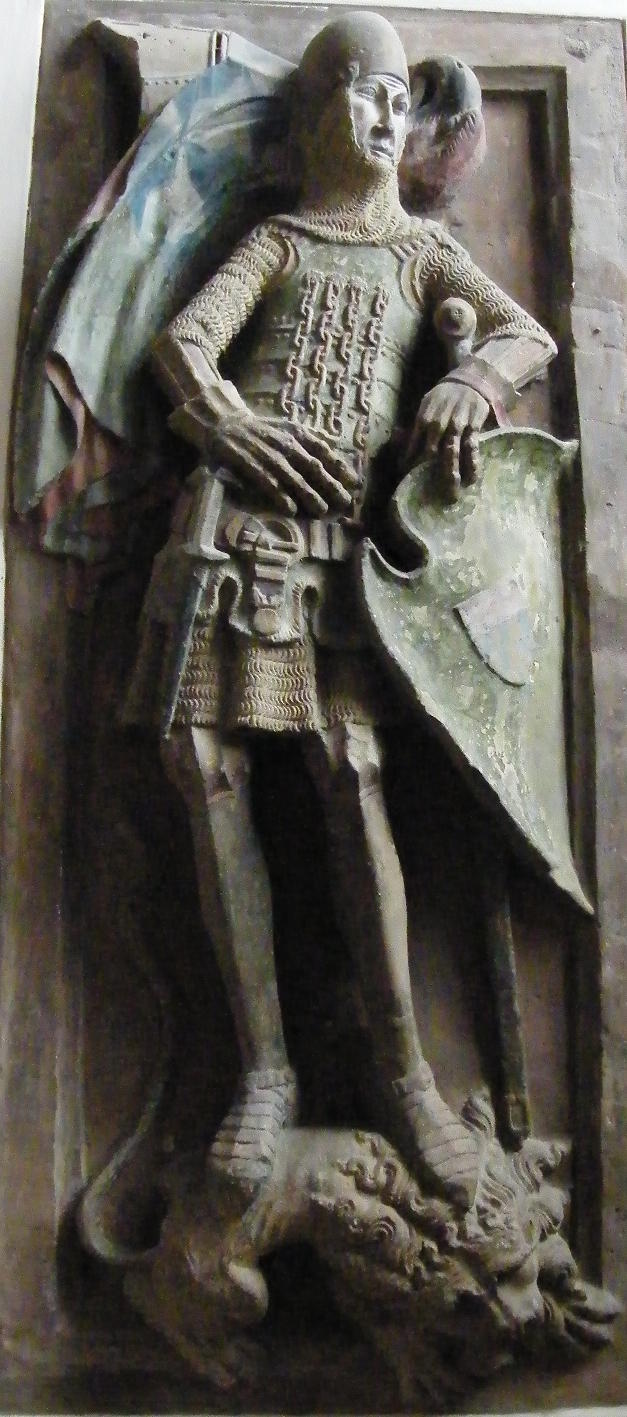
Try Amazon Fresh
Effigy of Walther Bopfingen, German Knight, d.1359. St. Blasius Church.

Image source: The Medieval Combat Society
Bopfingen is a small city in Baden-Württemberg, Germany.


Referenced as fig. 106. German Knight, Walther Bopfingen d.1359 in Armies of the Middle Ages, Volume 2 by Ian Heath:
The jupon became less popular in Germany after c.1350, and its abandonment means that we are now able to see the coat-of-plates (the Spangenrock or Spangenharnisch), possibly leather-faced, to which it can be seen that laminated shoulder-pieces are attached, as they often were until the end of the 14th century. The construction of Bopfingen’s coat-of-plates is virtually identical to those found in the mass-graves on the site of the Battle of Wisby, which demonstrate that 3 upright plates were sometimes substituted for the single plate covering the chest. Note the guard-chains attached to this plate, up to 4 of these appearing in most German effigies of this date; normally there were 3, used to secure the sword, dagger and heaume (being attached to the latter by the insertion of a retaining bolt through a cruciform slot on its lower edge). The fourth chain shown here would have been attached to the shield.
Other principal differences from the last figure include the substitution of plate greaves and sabatons for splinted and studded leather, and a short-sleeved haubergeon in place of the hauberk. Also, his shield is bouched, ie, it has a notch called a bouché cut into it in which the couched lance was rested during a charge. Such bouched shields seems to have actually originated in Germany. The inescutcheon of his arms on the shield is rather unusual but is to be found on several mid-century German effigies.